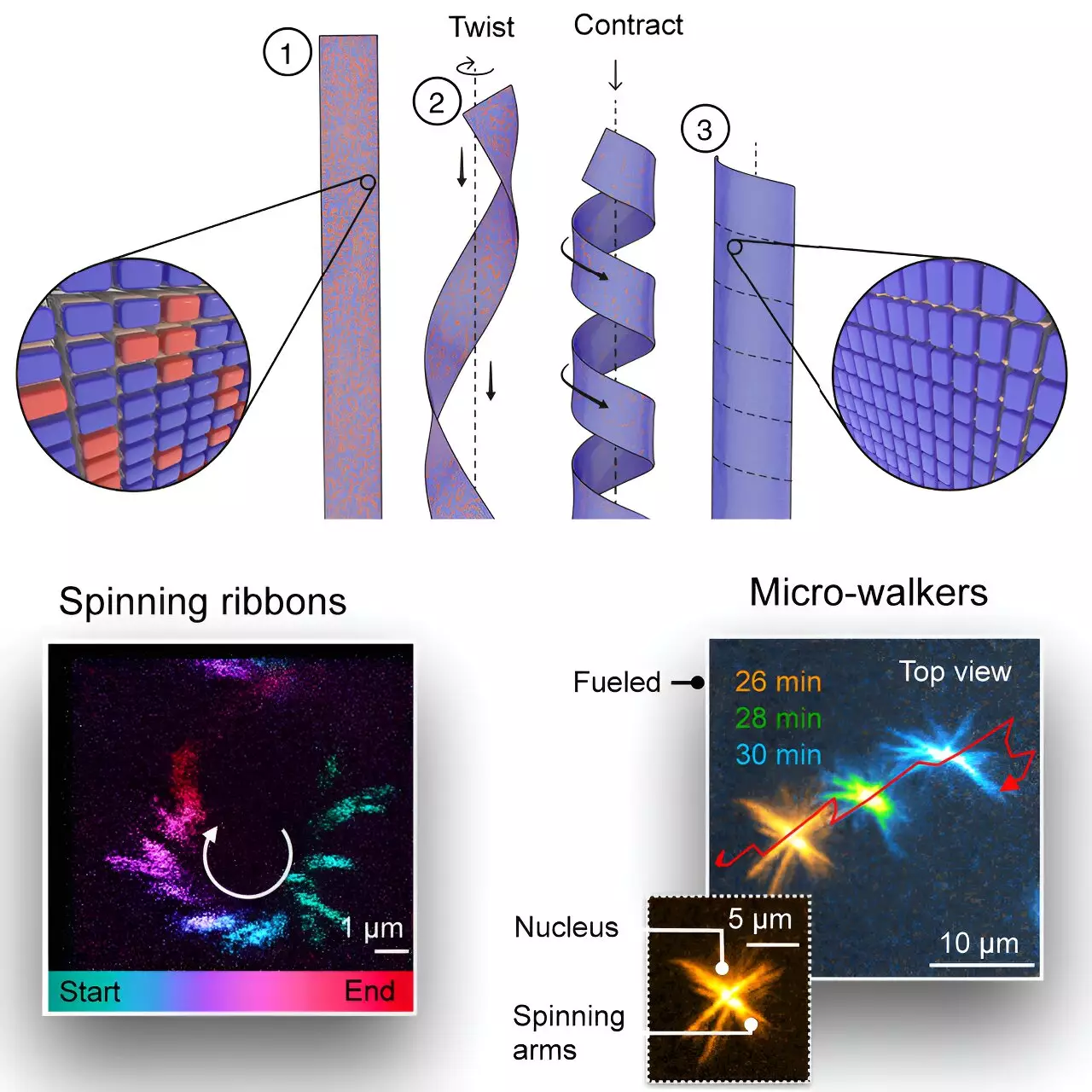Recent breakthroughs in mobile robotics at the supramolecular level have opened up new avenues for both scientific research and practical applications. Researchers from the Technical University of Munich (TUM) have unveiled an innovative wind-up motor that utilizes chemical energy to generate movement at a molecular scale. This small yet powerful ribbon, engineered from advanced molecular structures, holds the potential to revolutionize the field of nanotechnology and robotics.
At the heart of this groundbreaking development is a ribbon composed of peptide molecules measuring only a few micrometers in length and mere nanometers in width. The engineering process leverages a chemical fuel that instigates structural changes in the ribbon, enabling it to curl into tiny tubes. Upon activation, these tubes initiate a spinning motion akin to a miniature fin, allowing the motor to push and manipulate surrounding objects. This concept draws parallels to biological systems, particularly the archaea that utilize ATP as fuel for their flagella. For the first time, researchers have synthesized a structure that mirrors this intricate dance of nature, potentially paving the way for synthetic biological systems.
One of the most significant aspects of this motor is the researchers’ ability to finely control its motion. The rotation speed is determined by adjusting the amount of chemical fuel applied, granting precision that is crucial for potential applications. Additionally, the molecular architecture can dictate the direction of the spin—clockwise or counterclockwise—offering a level of versatility that has not been seen in previous synthetic models. This level of controllability is not only fascinating scientifically but could also catalyze advancements in nanorobotics, where accuracy and adaptability are paramount.
The potential applications for these tiny motors are both vast and impactful. By amassing multiple rotating ribbons, researchers envision creating “micro-walkers” capable of traversing surfaces and possibly operating within the human body. These micro-walkers could be engineered to facilitate drug delivery systems, enabling site-specific treatment of diseases such as cancer by directly targeting tumor cells in blood vessels. This innovative approach to localized therapy could significantly reduce side effects associated with traditional systemic treatments.
Despite the promising capabilities of these motorized ribbons, challenges remain before they can be utilized within living organisms. Current chemical fuels pose a risk of toxicity to human tissues, necessitating further research to develop safe alternatives. The quest for biocompatible fuel sources is fundamental to the future application of this technology in medicine. As researchers continue their work, it will be critical to address these hurdles, conducting rigorous testing to ensure compatibility with biological systems.
The development of supramolecular motors represents a significant leap forward in nanotechnology and robotics. Researchers at TUM have not only mimicked biological machinery but have also opened the door to new biomedical technologies that could change healthcare delivery. As the field evolves, with continued focus on creating safe, efficient systems, the intersection of chemistry and robotics promises to enhance our understanding of both fields while offering transformative solutions for complex medical challenges.


Leave a Reply